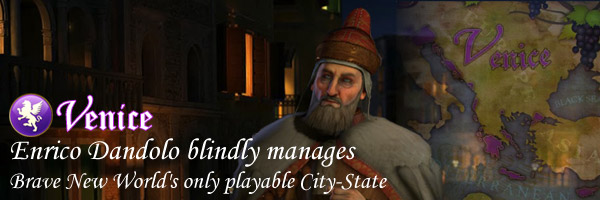
The penultimate entry in my series of strategy posts about Brave New World's new civilizations will focus on the very unique civilization of Venice: the playable City-State.
The city of Venice is one of the most architecturally astounding cities in the world. It is built on top of 118 small islands in the marshy Venetian lagoon. These natural and artificial islands are separated by a network of canals that run through the city and act almost like a network of roads. Many of the buildings and paved surface roads and walkways are built on top of stilts that emerge from these shallow canals and the city contains over 400 bridges. Historically, most of Venice's traffic has been through the waterways (via gondole) or on foot, but the modern city does have a contemporary road network (although a very compact one) intended for automobiles. Due to its unique environment and construction, the city is an astounding work of engineering art in and of itself.
There are no surviving historical records depicting the founding of Venice, but historians believe that the islands were originally settled by refugees from Roman cities during the Germanic and Hunnic invasions between 400 and 600 C.E. Venice began to expand its international influence prior to the thirteenth century by battling pirates that were plaguing trade in the Adriatic and Mediterranean. The city-state began to become an influential economic force in the region due to its position as a hub for trade between Europe and the Middle East, and Venice non-violently acquired control over many islands of the Aegean, including Cyprus and Crete. Failed military actions and the devastation of the black plague in the fifteenth century lead to the decline of the Venetian empire, and Venice was eventually conquered by Napoleon, then surrendered to Austria in the terms of a peace treaty, then conquered again by Italy during its war of independence. Fortunately, Venice was spared from attack during World War II, and so much of its historical architecture has remained intact, making it a popular tourist destination today.
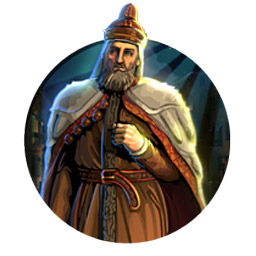
The 42nd Doge of Venice, Enrico Dandolo is known mostly for his blindness. There are conflicting stories regarding how Dandolo became blind. The decreasing legibility of his signature between 1174 and 1176 implies that he became blind gradually, possibly due to an injury sustained in Constantinople. He was also a very pious leader who provided invaluable assistance to the knights of the Fourth Crusade and played an integral part in the eventual sacking of Constantinople. Despite his blindness, Dandolo survived into extreme old age, being almost a hundred years old (by some estimates) at the time of his death in 1205. He was buried in the Hagia Sophia in Constantinople, but his original tomb was destroyed by the Ottomans when they captured Constantinople (renamed it Istanbul) and converted the Hagia Sophia into a mosque.
Venice was a City-State in Gods & Kings but was promoted to a full civilization for Brave New World. Venice doesn't expand like a traditional civ in Brave New World; instead, it buys control of fellow City-States or expands its influence via conquest, both of which are funded by its excessive trade routes. [More]
68d21b21-5812-4863-90c6-b12e9b6ac21b|13|4.9
Tags:Sid Meier's Civilization, Civilization V: Brave New World, Civilization V, Venice, Enrico Dandolo, Serenissima, Merchant of Venice, Great Galleass, trade, trade route, caravan, cargo ship, navy, puppet, warmonger, gold, commerce, Great Merchant, galleass, city state, capital, Civ-V
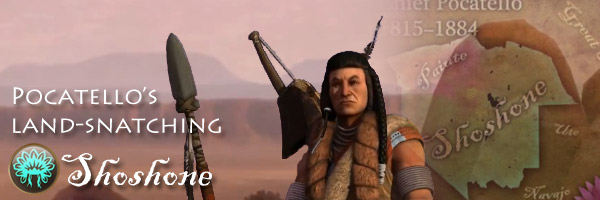
Only a few more civs to go in my series of strategy posts about Brave New World's new civilizations. Next up is the land-snatching Shoshone lead by Chief Pocatello.
The Shoshone are a group of native Americans that originated in the rocky regions of western North America (now Nevada and Utah). Around the same time as European colonists began settling on the east coast, the Shoshone began expanding eastward, which brought them into conflict with other plains indians such as the Blackfoot, Crow, Lakota, Cheyenne, and Arapaho. Some Shoshone who migrated into Texas and Oklahoma would break off into their own tribe: Comanche, who would become expert horsemen. The Shoshone began to come into conflict with the United States in the late nineteenth century due to the U.S.'s westward expansion, leading to a massacre of as many as 500 Shoshone at a winter encampment at Bear River in 1863. Shoshone culture has survived on reservations to this day, and in 2008, began working with Utah and Idaho state leaders to create a memorial to the Bear River Massacre. At its height, the Shoshone nation was composed of many tribes that occupied vast territory, extending from modern-day Montana all the way through Nevada; and their offshoot tribe, the Comanche, exhibited strong control of Texas and Oklahoma.
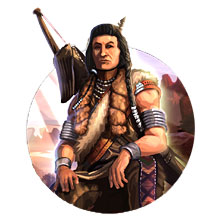
As westward immigration lead to conflict between the Shoshone and United States, Chief Pocatello (or, Tondzaosha) lead his tribe in raids and attacks against settlers in Idaho along the Oregon trail. He was feared and respected by his enemies, and Brigham Young (leader of the Mormons) attempted to offer terms of appeasement to the Shoshone in order to stop the attacks. Instead, the United States army arrived and destroyed any chances of a peaceful solution. Despite the overwhelming might of the U.S. army, Pocatello avoided the total massacre of his people and eventually negotiated the Fort Bridger Treaty of 1868, which granted the Shoshone a permanent reservation at Fort Hall near the Snake River in exchange for annual compensation from the United States (which the United States rarely honored in full). Due to this agreement, the Shoshone cultural identity survives to this day, and the city of Pocatello in Idaho is named in his honor. [More]
b4ea0d42-ce12-454e-8d39-78be32d2a953|8|4.9
Tags:Sid Meier's Civilization, Civilization V: Brave New World, Civilization V, Shoshone, Pocatello, Pathfinder, Comanche, Comanche Rider, Great Expanse, horses, exploration, scout, ancient ruins, native tongue, cavalry, Pride of the Ancestors, goody huts, tile acquisition, Civ-V, unique recon unit, unique mounted unit, unique unit
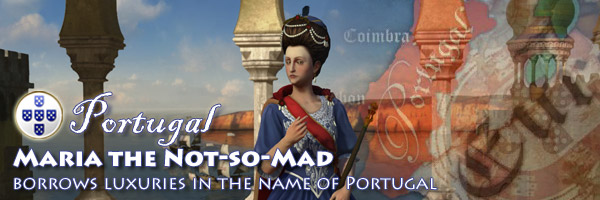
Going into the back-end of the new civilizations presented in Brave New World, here is another strategy posts. This time, I'll be discussing the gold-generating machine that is Portugal.
The Portuguese essentially initiated the European "Age of Discovery" through the efforts and patronage of Henry the Navigator. After exploring Atlantic islands, Africa, and South America, Portugal established the first world empire in Europe and became one of the wealthiest and most influential powers of the era. Portugal lost much of its imperial strength due to wars with Napoleon and after its most significant colony, Brazil, declared independence. Portugal would never regain its former glory, but it still maintained control over many trading colonies up through the nineteenth century through the use of Feitoria (fortified factory complexes) in its colonies, which are represented in Civ V as city states.
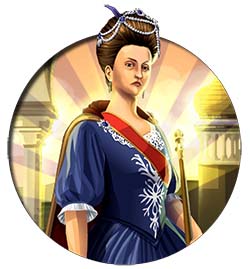
Maria I was the first undisputed queen regnant of Portugal and was crowned in 1777. Her rule was tarnished by mental instability and dementia that was first noticed in 1786 and which had made her incapable of managing affairs of state by 1792. The following decade, wars broke out with Spain and Napoleonic France, and Maria (along with the entire royal court) was moved to the colony of Brazil. Despite her madness, she is well-regarded among both Portuguese and Brazilian historians for her domestic policies and for supporting Brazilian independence. she is known as "Maria the Pious" in Portugal, and "Maria the Mad" in Brazil due to the fact that her mental state had already deteriorated by the time she had been relocated to Brazil, and her son had to perform most duties of state. [More]
655c6ad7-9fae-42c8-95b9-68b5c7d0e6d4|4|5.0
Tags:Sid Meier's Civilization, Civilization V: Brave New World, Civilization V, Portugal, Maria I, Nau, carrack, caravel, navy, Feitoria, factory, fort, closed sea, commerce, luxury resource, resource diversity, gold, trade, trade route, caravan, cargo ship, unique improvement, Exotic Cargo, Mare Clausum, city state, Civ-V
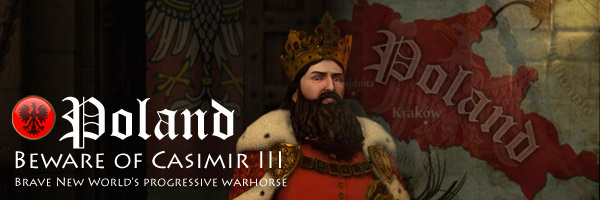
Halfway through my series of strategy posts about Brave New World's new civilizations, we have Poland.
Poland is a Slavic nation in Central Europe that can trace its origins to the 10th century AD, when Mieszko I united the pagan tribes that were ruled by his ancestors and was crowned the first King of the Polans. He was baptized during his reign and the young Polish kingdom quickly became part of the Catholic sphere of influence. During the late Middle Ages, the rulers of Poland began putting increasing focus on educational and social reforms, and Poland became one of the best-educated nations in all of Europe, which may have contributed to it becoming a popular destination for immigrants - particularly Germans, Jews, and Armenians. The high level of education may have also helped protect the Polish population from the effects of the plague, as Poland had one of the lowest mortality rates of any European nation during the time of the Black Death. The combination of large numbers of immigrants and the popularity of Protestantism during the Reformation helped Poland to become a very tolerant culture. Its central location in Europe made Poland a subject to many wars, particularly with Germany, Prussia, and Russian. The nation was occupied by Nazi Germany during World War II, and was firmly within the Iron Curtain during the Cold War, but eventually returned to a democratic style of governance based on a market economy after the fall of the Soviet Union.
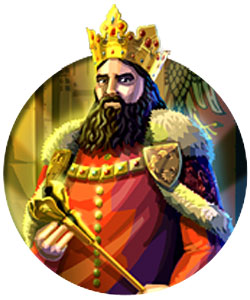
Casimir III was the last King of Poland from the Piast (founding) Dynasty, and is widely regarded as the nation's greatest leader. He inherited a nation that was crumbling due to a war-blasted economy, and the legitimacy of his claim to the throne was questioned by his political rivals. In order to gain the favor of the landed elites, he reformed Polish law to grant special privileges to the higher castes; and he gained the favor of Jewish immigrants by granting them unprecedented protections under the law that allowed them to maintain their religious and cultural identities during a time in which other European Jews were being forced to convert to Christianity. During his reign, he founded Poland's first major university, and promoted an educated society. Casimir remarried several times, and since all of the children from his first and fourth (final) marriage were daughters, he left no lawful heirs; thus, he named one of his nephews to be his heir. By the end of his reign, Poland had doubled in size and had a flourishing economy and growing educated classes.
Led by the bearded and intimidating Casimir III, Poland was an immediately attractive Brave New World civilization due to Solidarity. Free social policies you say? Yes, please! Give me those policies so that I may conquer the world! Poland is Chichian's favorite civ in the expansion (and maybe the whole game) due to her fondness of social policies. I can't really argue against her. [More]
93f1cb37-b3dd-48af-99d0-c48378b750e3|15|4.3
Tags:Sid Meier's Civilization, Civilization V: Brave New World, Civilization V, Poland, Casimir III, Winged Hussar, hussar, Solidarity, social policies, pastures, horses, mounted warfare, lancer, stable, Heavy Charge, Ducal Stable, Civ-V
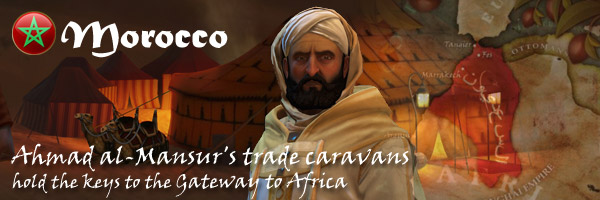
Continuing my series of Civilization V strategies, the fourth installation will cover the African trading empire of Morocco lead by Ahmad al-Mansur.
When the area of Morocco (north west Africa) was first inhabited about 100,000 years ago, the land was a fertile savannah, rather than the arid desert and mountains that it is today, and archeological remains of several Paleolithic proto human cultures exist in the region. During the classical era, Phoenicians established colonies on west Africa, and eventually it was conquered by Carthage and then Rome, and then by Muslim Arabs around 670 CE. The earliest independent Moroccan states were the Berber kingdoms which dates to at least 110 BC, and after the repulsion of Arab rule, the Berbers resumed control. Morocco was the first nation to recognize the United States as an independent nation, and their fleet protected U.S. merchant ships from assaults from barbary pirates. The friendship treaty with Morocco is the United States' oldest non-broken friendship treaty.
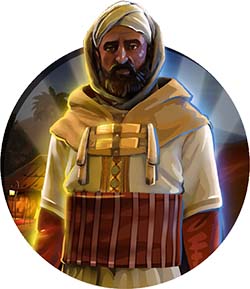
After the assassination of the Saadi Sultan Mohammed ash-Sheikh, his oldest son, Abdallah al-Ghalib sought sole rule, and Ahmad al-Mansur and his brother, Abd al-Malik, had to flee to the Ottoman empire. When Ahmad al-Mansur eventually gained control of Morocco, he resisted Ottoman annexation and maintained Morocco as an independent state, he established friendly relations with many Christian European nations, and began playing the Ottomans and Europeans against each other in order to secure his position of power. Later in his reign, he launched a military campaign against the Songhai empire, which had been weakened by civil strife. The campaign was successful, but Ahmad's heirs couldn't manage the vast territory that had been conquered, so it was divided into smaller kingdoms, and the Moroccan empire went into decline. Ahmad died of the plague in 1603
Morocco was the first civilization that I played in Civilization V: Brave New World. I chose them because their trait is very general-purpose and emphasizes the new trade route mechanic. [More]
35d6f741-18a8-4eb0-9140-07beeb3ea89c|8|4.9
Tags:trade, Sid Meier's Civilization, Civilization V: Brave New World, Civilization V, trade route, Morocco, Ahmad al-Mansur, Kasbah, Berber Cavalry, Gateway to Africa, caravan, cargo, cargo ship, culture, gold, unique improvement, cavalry, desert, Desert Warrior, Homeland Guardian, Civ-V
|

| 12 | | | | | | | 60 | | 11 | | | | | | | 55 | | 10 | | | | | | | 50 | | 09 | | | | | | | 45 | | 08 | | | | | | | 40 | | 07 | | | | | | | 35 | | 06 | | | | | | | 30 | | 05 | | | | | | | 25 | | 04 | | | | | | | 20 | | 03 | | | | | | | 15 | | 02 | | | | | | | 10 | | 01 | | | | | | | 05 |
|